5 Best Ikigai Books to Live a Meaningful Life [+ Summaries]
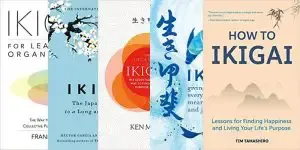 Ikigai is as much a way of life as an idea.
Ikigai is as much a way of life as an idea.
While the Japanese approach to finding and living in a meaningful way is ultimately a simple one, its effects are far-reaching.
This article reviews five of the best books written about ikigai. It explores how the Japanese define and share the concept and why it appears to have such a profound effect on their population’s longevity.
Each book can be read on its own, yet when combined, they embody a more extensive view of what ikigai is and how it can become part of our everyday lives.
Before you continue, we thought you might like to download our free Ikigai Exercise. This detailed and beautifully designed printable worksheet will walk you or your clients through the process of finding Ikigai.
This Article Contains:
- 1. Ikigai: The Japanese Secret to a Long and Happy Life
- 2. Ikigai for Leaders and Organisations
- 3. Ikigai: Giving Every Day Meaning and Joy
- 4. How to Ikigai: Lessons for Finding Happiness and Living Your Life’s Purpose
- 5. The Little Book of Ikigai
- PositivePsychology.com Ikigai Tools
- A Take-Home Message
- References
1. Ikigai: The Japanese Secret to a Long and Happy Life – Héctor García and Francesc Miralles
Ikigai: The Japanese Secret to a Long and Happy Life is beautifully designed and laid out. It provides a great place to start on your own or your client’s journey to understand and embrace the Japanese idea of ikigai.
Héctor García and Francesc Miralles begin this delightful book by telling the reader how the idea for it started to take shape over several meetings in a small Tokyo bar.
As their friendship grew, they became increasingly aware of their shared interest in answering a question that has challenged philosophers, poets, and writers for thousands of years: What is the meaning of life?
It was not long before they turned their attention to the Japanese concept of ikigai. The word translates, more or less, to “the happiness of always being busy” and may go some small way to explaining the extraordinary longevity of the Japanese people.
While many Japanese live a simple, healthy life, with good food and plenty of time outdoors, the authors suggest ikigai has a profound effect on their lives. The book’s goal is to capture and share the ideas behind ikigai and teach how adopting its principles can lead to a “long and joyful journey through life.”
According to the residents of the Japanese island of Okinawa, it is the reason they get up in the morning. And there must be something in it. Okinawa belongs to a “blue zone” (one of only a few places in the world identified for longevity and wellbeing) and has more people who have passed 100 years than anywhere else in the world.
Ikigai is found in our state of devotion to the activities we perform and enjoy. A sense of fulfillment and your reason for being arise from self-knowledge and, as represented in the diagram below:
- What you love
- What you are good at
- What the world needs
- What you can get paid for
The ikigai diagram: A philosophical perspective
The book has more than one purpose. Firstly, it explores ikigai-inspired lifestyle habits that help us live a long and healthy life, such as our ability to manage stress, avoid a sedentary lifestyle, value emotional awareness, develop a positive attitude, and get adequate sleep.
But it also helps the reader find their ikigai.
The text builds on Viktor Frankl’s work on searching for reasons to live and Mihaly Csikszentmihalyi’s flow concept. It then explores meditation and resilience before concluding with 10 rules of ikigai that neatly wrap up the book and its overarching message:
- Stay active, do not retire.
- Take it slow.
- Don’t fill your stomach.
- Surround yourself with good friends.
- Get in shape.
- Smile.
- Reconnect with nature.
- Give thanks.
- Live in the moment.
- Follow your ikigai.
Without exception, the advice is excellent. After all, our passions and talents are unique to each of us. If we know them, they should be shared and experienced here and now; if we don’t, our mission should be their discovery.
This is a delightful book, written with both style and elegance, that clearly explains the concepts behind ikigai while offering practical advice.
You can find Ikigai: The Japanese Secret to a Long and Happy Life on Amazon.
Ikigai the Japanese secret to a long and happy life – Audible Books
2. Ikigai for Leaders and Organisations – Frank Brueck
Frank Brueck is an honorary professor at the University of Stellenbosch Business School in Cape Town, South Africa.
In his fascinating and insightful book, Brueck introduces the Japanese model of ikigai as a tool for challenging how we work and live, and a means to reinvent and reposition ourselves in our lives.
Haven’t we all asked ourselves: Can we have a “working life that’s enjoyable, meaningful and successful”? And as a leader, how can we be a powerful source of inspiration and motivation to others?
While usually reserved for the individual, ikigai when applied to business has the potential to motivate an entire workforce and drive genuine change inside and outside the walls of the organization. Its effect is to invigorate and encourage a state of flow in all that we do, providing vitality and passion.
With those thoughts in mind, Brueck asks the reader to consider the following four questions of ikigai (similar to those of García and Miralles):
- What are you really good at?
- What do you love to do?
- What does the world need?
- What can you get paid for?
Only by answering and living these four dimensions personally as a leader and as an organization can we reach a point where we live with passion and positively affect our environment and society.
We need to find a way to combine each of the dimensions (and it has to be all of them) to achieve balance and happiness in our lives and workplace.
For the individual studying the book as a leader, the assessment tools are a practical way to assess whether their company is currently operating in a balanced way without exploitation, or if it can in the future.
The author states that if adopted at an organizational level, ikigai can change behaviors inside and outside its structures. It can serve as a source of both inspiration and energy for those who practice it.
It’s a powerful and ambitious message that offers an opportunity for positive change. Whether adopted in its entirety or in part, it could make a real difference to the way we think about how an organization does business.
Brueck makes an excellent case for applying ikigai in a business context. Rather than seeing an organization’s purpose as merely to generate profit and exploit natural resources, it is time to identify new ways of meeting previously forgotten stakeholder groups’ needs.
You can find Ikigai for Leaders and Organisations on Amazon.
3. Ikigai: Giving Every Day Meaning and Joy – Yukari Mitsuhashi
This brightly covered book naturally feels like something you want to pick up and start reading.
The author, who grew up in Japan, instantly engages the reader with her deep knowledge of ikigai, explaining that while the term is often translated as life’s purpose (which can sound formidable and foreboding), it also concerns the joy one finds in living day to day.
After all, without ongoing happiness, we would be unlikely to live a long and meaningful life.
A common and implicitly understood idea in Japan, ikigai is learned as part of life rather than formally taught.
And perhaps this is why it is so often misrepresented and misunderstood in the West. Ikigai is not, according to Mitsuhashi, focused solely on our career. And while helpful, the four overlapping circles we often use to understand the term can be limiting.
It is not that this representation is inherently wrong, but that it constrains the idea of ikigai. To the Japanese, while ikigai can be related to their work, it could just as easily be a pastime such as fishing, meeting with friends, or enjoying a glass of wine.
Ikigai: Giving Every Day Meaning and Joy describes ikigai as a type of happiness that continues to move toward the future while finding value in the present.
Mitsuhashi writes,
“ikigai is about focusing on individual moments, not just on the big journey of life.”
When applied to work, even if we are unhappy in our chosen career, we should look for details that we enjoy, even if they are small ones. Work, like all aspects of our lives, is not all or nothing. Simple changes here and there may nudge the tasks into a state of ikigai.
The key is curiosity – finding new ways of doing things and always looking for something interesting in the details.
The book explores the notion that by identifying your purpose and passion – your ikigai – you are more likely to live a happy life. And it need not be something grand (writing a great novel or discovering a new medicine); it can be something humble like making a good meal or walking in nature.
Mitsuhashi conveys her deep love for this traditional Japanese principle while bringing it into the modern world and its many challenges. Rather than offering a template to adopt, she guides us to examine all aspects of our lives and learn how to appreciate the everyday moments we often overlook.
While a simple, uncomplicated philosophy, the text is one that the reader will undoubtedly return to many times. Mitsuhashi’s intuitive and native understanding of ikigai brings an additional and essential insight that may be lost in other, more Western interpretations.
You can find Ikigai: Giving Every Day Meaning and Joy on Amazon.
4. How to Ikigai: Lessons for Finding Happiness and Living Your Life’s Purpose – Tim Tamashiro
Tim Tamashiro manages to combine one of Japan’s most ancient principles with the modern world in a book filled with fascinating examples of ikigai (in his words, “life’s worth”) in action while delivering some excellent teachings in humility.
The book begins with the story of his friend Dave. The reason Dave has for getting out of bed every day is to please people. It is hard to imagine, for many of us turned cynical by our drive to succeed, but Tamashiro’s book has many other such examples.
Each person has a unique story and a reason that makes their day worthwhile and a joy to begin.
He also points out that ikigai is reciprocal, though not always immediately. He states:
“Sending delight out to the world, I get delight back in the world.”
His mantra reminds me of the beautiful film, Pay It Forward, directed by Mimi Leder. The moral of the story is that doing good for others spreads and grows.
Tamashiro’s message is that practicing ikigai helps you discover your gifts and live with purpose, and is within reach of us all. His writing is both witty and insightful, getting straight to the heart of the issues.
“We’ve been told that when you get a good education, you get a good job, and then you live a good life. But there is more,” he says. Instead, we can use ikigai as a map to guide us through the modern world and figure out life’s purpose. To follow the directions, we must 1) do what we love, 2) do what we are good at, 3) do what the world needs, and 4) do what we will be rewarded for.
More importantly, he explains that the magic really begins when you share what you love and are good at (conditions 1 and 2) with the world to gain full ikigai (conditions 3 and 4).
As Tamashiro explains, “when you put your finger on what your ikigai is, it’s like you gain a superpower. It’s like you get a GPS for your life.”
The superpower, or ikigai, of his book is its ability to clearly explain this fascinating idea while forming images from the stories within. It’s a great read worthy of one final quote:
“Ikigai cannot be found in the future. It can only be lived in the now.”
You can find How to Ikigai: Lessons for Finding Happiness and Living Your Life’s Purpose on Amazon.
5. The Little Book of Ikigai – Ken Mogi
Japanese people rank as some of the highest in the world for longevity. Could it be their outlook on life and their reason for getting up each morning? Possibly.
After all, ikigai is embedded in all that they do. It is part of their professional lives, but also their pastimes and relationships.
In his highly readable book, neuroscientist Ken Mogi introduces us to the five key pillars of ikigai, along with the science to back them up:
- Starting small
- Releasing yourself
- Harmony and sustainability
- The joy of little things
- Being in the here and now
Each of the foundations is equally important, yet together, they provide the framework for ikigai to flourish. Along with some beautiful anecdotes and stories, the five pillars guide us along the road to understanding and adopting this ancient Japanese practice’s principles.
Importantly, Mogi’s message is that ikigai is not about success (though it often brings it) as is sometimes pictured in the West. You may be the world’s oldest three-Michelin-star head chef at a Tokyo sushi restaurant visited by President Obama or a cleaner on the famous Shinkansen bullet train. Ikigai is available to all of us; it is found in the small things in life.
By working through the pillars, he explains the steps to ikigai, such as making a habit of the little things you enjoy: that fresh early morning coffee or a smile from a regular on your dog-walking route. Or focusing on the little details that add quality to what you create and enjoyment to what you do: the well-written email or the finishing touches to a nice meal.
As The Little Book of Ikagai explains, being in the here and now can be helped by focusing on qualia – the sensory qualities of food, drink, or music special for you. Releasing yourself to enjoy these pleasures requires relinquishing the self’s burden and opening up to the possibilities of enjoyment.
As described in the other books reviewed in this article, the work of Mihaly Csikszentmihalyi on flow is never far away. Being deeply engaged in an activity where nothing else matters is intimately linked to the idea of ikigai. And, as with the Japanese ideal, flow is evident in both the quality of the work produced and the nature of the experience.
Ultimately Mogi’s book is a call to action, albeit softly spoken. The text aims to inspire you to try new things and make changes, one step at a time. The shift to finding meaning in life is not a revolution, so much as an evolution.
You can find The Little Book of Ikigai on Amazon.
PositivePsychology.com Ikigai Tools
An ikigai diagram is available as one of three free downloads in the PositivePsychology.com Toolkit©. The diagram can be completed by answering what you love, what you are great at, what you believe the world needs, and what you can get paid for.
There are several other tools available that will help your client understand the closely related concept of values:
- Your Core Values Worksheet gives the user a list of values and three steps to select the ones that apply to them.
- Personal Values Worksheet introduces a values clarification exercise with ten life domains for the user to explore.
We also share a selection of articles focused on Ikigai:
- The Philosophy of Ikigai: 3 Examples About Finding Purpose
- 35 Ikigai Quotes That Will Inspire You and Make You Reflect
- Finding Your Ikigai: 8 Questionnaires and Tests
- 6 Worksheets & Templates to Find Your Ikigai
If you’re looking for more science-based ways to help others discover meaning, this collection contains 17 validated meaning tools for practitioners. Use them to help others choose directions for their lives in alignment with what is truly important to them.
A Take-Home Message
“Ultimately, ikigai is about knowing yourself.”
Yukari Mitsuhashi
If we wish to live a life with meaning, we must understand our values to choose a path that prioritizes them (Mitsuhashi, 2018).
Each of the authors has a unique take on the literal and practical meaning behind ikigai, but they all share a similar sense of recognizing its relationship to life’s worth. After all, in a very real sense, it is what makes us get up in the morning.
The four questions – or conditions – referred to in each book provide a useful guide by which we can measure our choices. Ikigai is only fully present when all four are met. The skilled surfer may love riding the waves but is not rewarded (other than experientially) unless a way is found to meet the world’s needs and receive payment.
On the other hand, the humble gardener sells roses at the roadside and has found ikigai. The gardener is in love with watching their flowers flourish, skilled at creating beauty, and the world wants and is willing to pay for what they have grown. The gardener is both receiving and giving.
All of the books included help us understand the nature of the quest to ikigai, yet part of the journey is to choose a path – our path. The decisions we make are part of the act of realizing where we want to go.
Begin by choosing one of the books. All of them are highly readable and insightful. Then move on to some of the others for a different, yet related view to expand your understanding of ikigai and explore the positive changes it can make to your life.
We hope you enjoyed reading this article. Don’t forget to download our free ‘Finding Your Ikigai’ Exercise.
- Brueck, F. (2020). Ikigai for leaders and organisations: The way to individual and collective purpose and meaning [Kindle DX version]. Retrieved from Amazon.com
- García, H., & Miralles, F. (2018). Ikigai: The Japanese secret to a long and happy life. Thorndike Press Large Print.
- Mitsuhashi, Y. (2018). Ikigai: Giving every day meaning and joy. Kyle Books.
- Mogi, K. (2018). The little book of ikigai. Quercus.
- Tamashiro, T. (2019). How to ikigai: Lessons for finding happiness and living your life’s purpose. Wisdom Tree.
Let us know your thoughts
Read other articles by their category
- Body & Brain (42)
- Coaching & Application (56)
- Compassion (26)
- Counseling (50)
- Emotional Intelligence (24)
- Gratitude (18)
- Grief & Bereavement (21)
- Happiness & SWB (39)
- Meaning & Values (25)
- Meditation (20)
- Mindfulness (44)
- Motivation & Goals (43)
- Optimism & Mindset (32)
- Positive CBT (25)
- Positive Communication (20)
- Positive Education (44)
- Positive Emotions (30)
- Positive Leadership (13)
- Positive Psychology (32)
- Positive Workplace (33)
- Productivity (16)
- Relationships (42)
- Resilience & Coping (34)
- Self Awareness (20)
- Self Esteem (36)
- Software & Apps (22)
- Strengths & Virtues (30)
- Stress & Burnout Prevention (33)
- Theory & Books (44)
- Therapy Exercises (35)
- Types of Therapy (58)
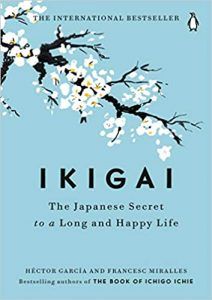
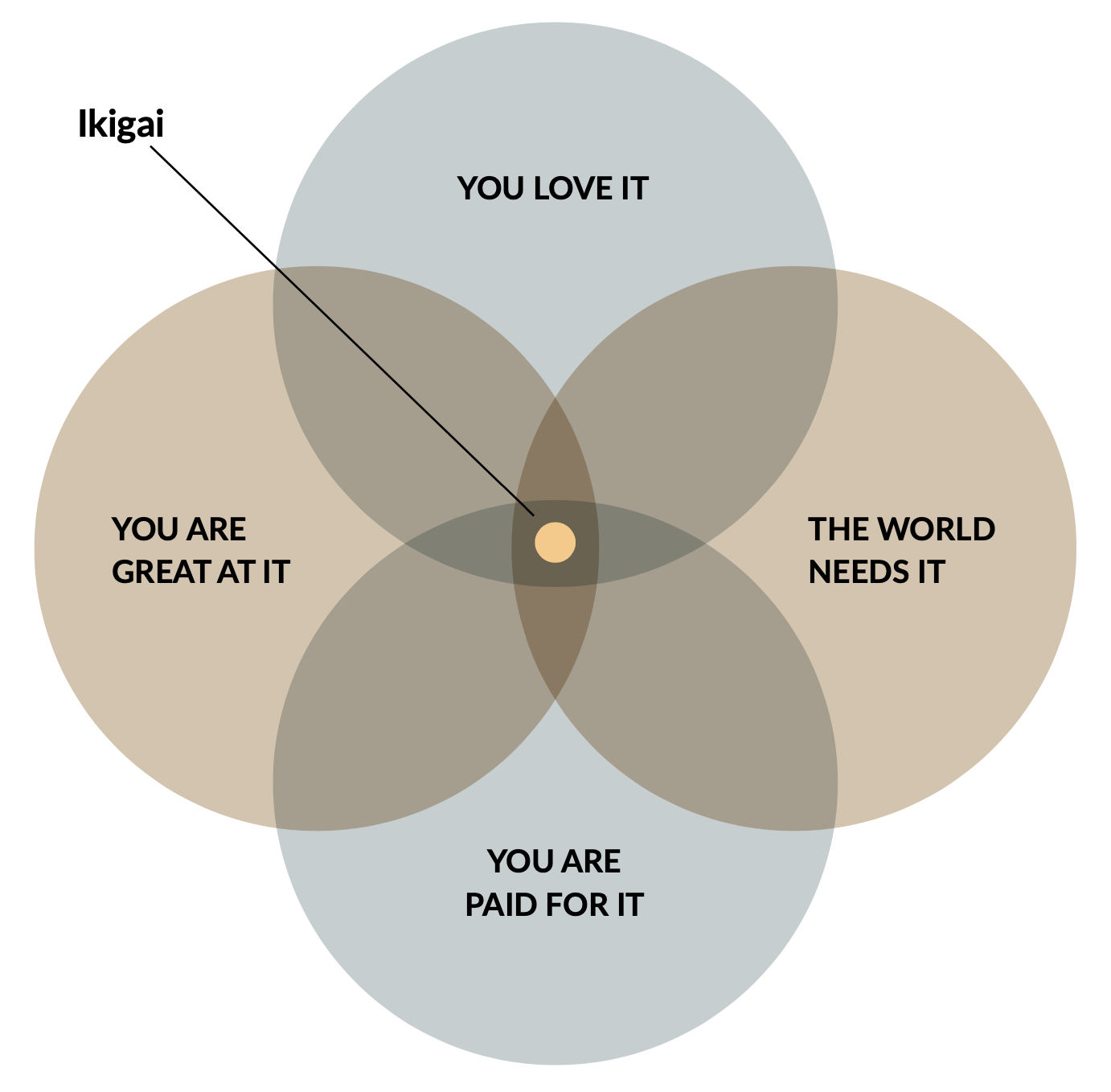
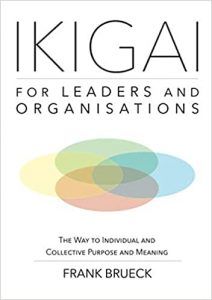

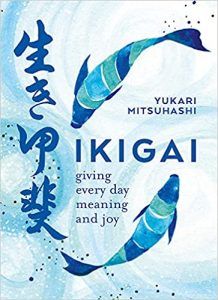
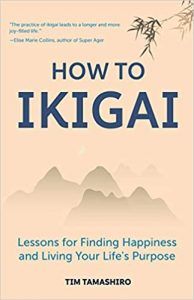
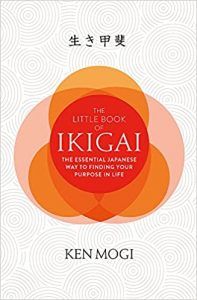



What our readers think
This is amazing. I found the books which I searched all the time. Thank you for the valuable expressions . I am thirsty to read these books🎐Bless you 🎐
Thank you for these summaries! I am inspired to learn more about this. It feels like I have just uncovered another one of those universal truths that are available or within us all, made known or accessible when needed. Thank you.
Reviewed books testify how difficult is to draw a boundary around concept of ikigai. One important aspect of ikigai is intentional connectedness with surrounding life, visible and invisible. It is the source of our growth.
Beautifully summarises the whole concept on books on Ikigai.
Thank you for sharing.
How come it’s taken me 60yrs before I even heard of ikigai? If I had heard about this concept(s) in my youth I definitely think that my life would have turned out differently in a good way.
The information shared in the articles on this site is the best I have seen on the net. Content is detailed with links to exercises to help solidify the learning. Well done again.
It is an excellent information about Ikigai. I already read the first book mentioned above. However, I didn’t know much about the rest. Thank you so much for the help.